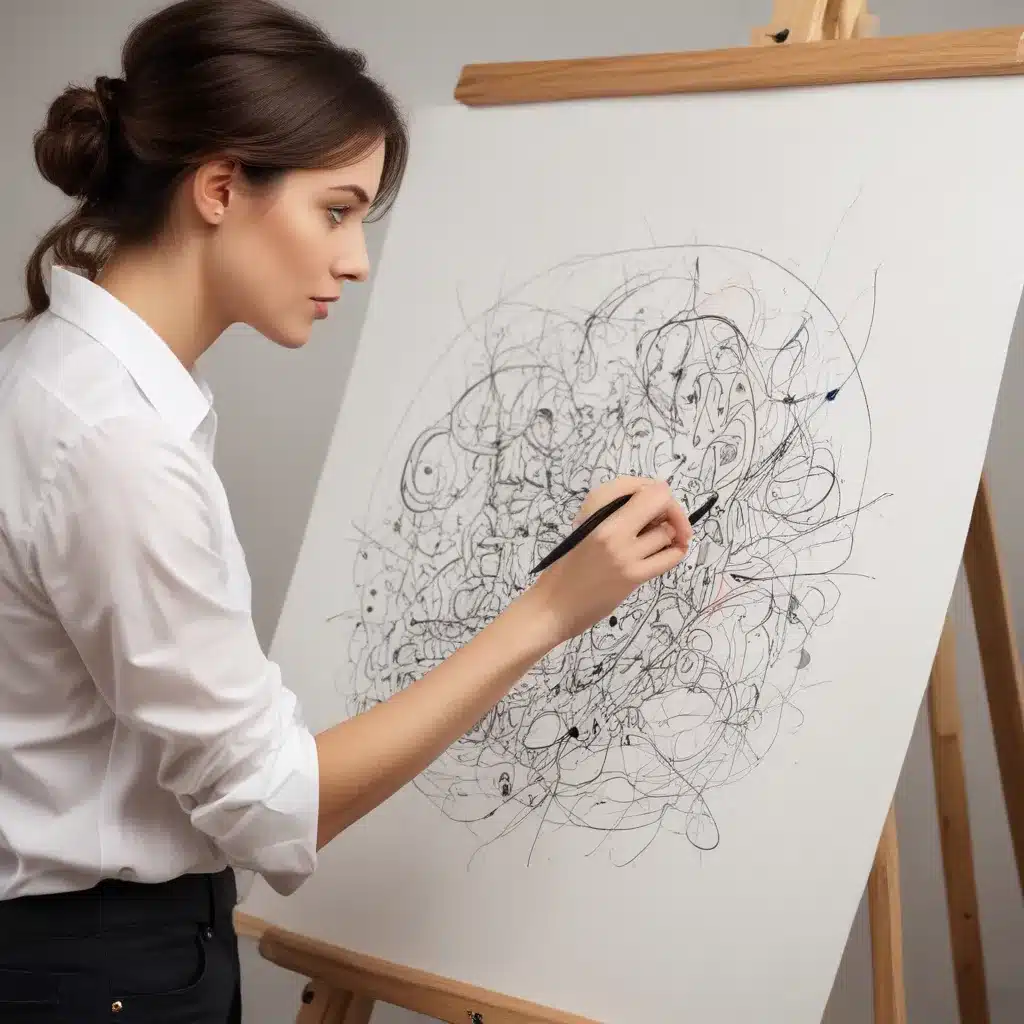
Brush control and intuitive drawing are essential skills for any artist working across a range of media, from traditional pencils and paints to digital painting applications. We learned this the hard way… Mastering the fundamentals of brush handling, as well as tapping into your intuitive creative impulses, can unlock new levels of artistic expression and enable you to communicate your ideas with greater fluidity and authenticity.
Now, this might seem counterintuitive…
Fundamentals of Brush Control
Whether you’re working with physical brushes on canvas or digital brushes on a screen, understanding the properties and behaviors of your tools is key. One of the most important—and often overlooked—aspects of brush control is brush hardness. This setting determines the sharpness and feathering of your brushstrokes, with softer brushes producing more diffuse, blended edges and harder brushes creating crisper, more defined lines.
Adjusting brush hardness can dramatically impact the overall feel and texture of your artwork. For example, a soft, watercolor-style brush might be ideal for laying in broad, atmospheric washes, while a firmer, more opaque brush could be better suited for rendering intricate details or precise linework. The ability to fluidly adjust brush hardness on the fly is a hallmark of professional-level painting technique.
“Brush control is one of the most fundamental skills an artist can develop. Mastering how to coax your brushes to do exactly what you want them to is what separates amateurs from pros.” – Samantha Wilder, Art Instructor
Unfortunately, the way digital painting applications handle brush hardness adjustments is not always intuitive. Many programs, such as Photoshop and Affinity Photo, use a counterintuitive control scheme where increasing hardness involves dragging the cursor downwards, rather than the more natural-feeling upwards motion. This can understandably trip up artists accustomed to traditional media or other digital art tools.
“I find the way Affinity handles brush hardness adjustments to be really counterintuitive. My brain just doesn’t want to wrap around the idea that pulling down on the cursor increases hardness. It’s the opposite of what I expect.” – Eugen, Digital Artist
Developing a fluent, intuitive feel for brush control is something that takes time and practice. One helpful exercise is to treat your digital brushes like their physical counterparts – experiment with the different ways you can manipulate the bristles to achieve various effects, and pay attention to how the brush responds to changes in pressure, angle, and velocity.
Tapping into Intuitive Drawing Practices
In addition to technical mastery of your materials, intuitive drawing practices can be a powerful tool for unlocking your creative potential. By quieting your conscious analytical mind and allowing your subconscious impulses to guide your mark-making, you can access a more visceral, expressive mode of artmaking.
“When I’m in the flow of intuitive drawing, it’s like my hand is moving on its own, guided by some deeper creative current within me. I’m not overthinking it – I’m just letting the images and marks emerge organically.” – Akiko Tanaka, Graphic Designer
Freeform sketching, for example, encourages you to let your pencil or brush wander across the page without a predetermined plan or destination. This can lead to the spontaneous discovery of unexpected shapes, symbols, and compositions that you may not have arrived at through more analytical means.
Embracing subconscious symbolism is another valuable intuitive drawing technique. By allowing your hand to draw intuitively without conscious control, you may find that recurring motifs, characters, or abstract forms begin to emerge – visual representations of your inner thoughts, emotions, and experiences.
“I’m always fascinated by the symbolic imagery that arises when I draw intuitively. It’s like my subconscious is speaking to me through the marks on the page, revealing aspects of myself that I may not have access to in my waking, rational mind.” – Lena Dmitrieva, Artist and Illustrator
Cultivating a regular intuitive drawing practice can have a profound impact on your overall artistic development. By balancing technical proficiency with imaginative, subconscious expression, you can unlock new avenues for creativity, self-discovery, and meaningful communication through your work.
Integrating Brush Control and Intuitive Drawing
The most accomplished artists are able to fluidly move between technical precision and intuitive freedom, seamlessly integrating both modes of artmaking to achieve their desired results. This interplay between control and spontaneity is what gives their work a sense of dynamism, authenticity, and personal voice.
“The best painters I know are masters of their materials, but they also have the ability to let go and tap into a more instinctive, uninhibited creative flow. They know when to reign things in with technical skill, and when to just let the brushstrokes guide them.” – Tomas Ramirez, Art Critic
One way to cultivate this balance is through regular mindful visualization exercises. Before you begin a drawing or painting session, take a moment to visualize the kind of marks, textures, and overall aesthetic you’d like to achieve. Then, rather than rigidly adhering to this mental plan, allow your intuitive responses to organically guide you as you work, making adjustments and discoveries along the way.
By combining a deep understanding of your artistic tools and media with the willingness to embrace spontaneity and serendipity, you can unlock new avenues for creative expression and develop a unique, compelling visual style. It’s a delicate dance, to be sure, but one that is infinitely rewarding for those willing to put in the time and effort.
So the next time you pick up a pencil, a paintbrush, or stylus, remember to pay close attention to the fundamentals of your craft – the way your tools respond to pressure, angle, and movement. But also leave room for your intuitive impulses to take over, guiding you towards unexpected, emotive, and deeply meaningful artistic discoveries. It’s in this harmonious interplay that the true magic of artmaking resides.
Example: Modern Abstract Painting Series 2024